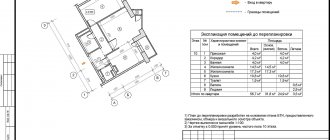general information
The main purpose of any assessment, regardless of the object being assessed, is to determine its value. This value can be different: market, cadastral, inventory, and so on.
Appraising the value of real estate is the process of determining the price of an item for which it can be sold now / at a desired date in the past, or taking into account other circumstances, such as existing encumbrances or foreclosures).
In addition, the valuation procedure may also include determining the value of lease rights, easements and other real rights to real estate.
Real estate assessments are carried out in relation to various objects:
- land plots, regardless of their intended purpose;
- agricultural shares;
- apartments, houses and other types of residential real estate;
- industrial and commercial premises;
- office buildings and premises;
- retail premises;
- unfinished construction projects;
- capital garages, commercial non-residential buildings and other objects of value.
In general, the answer to the question of what is real estate valuation includes analysis:
- the general state of the economy in a particular region;
- individual characteristics of the object: location, condition, quantitative characteristics, architectural features, decoration, and so on;
- prices for other objects with similar qualitative and quantitative characteristics.
Such a study allows us to establish the relationship between the principles, factors and parameters that form the value of the item being valued. It is this formulation that most accurately describes the concept and purposes of real estate valuation.
A more complete analysis of information allows you to predict market trends, determine the dynamics of growth or decline in value, and even determine the investment attractiveness of a particular property in the future.
Relevance of assessment in modern market conditions
Few ordinary people are familiar with the specifics of valuation activities. Therefore, it is not surprising that many people wonder what a real estate appraisal is for today. There are several reasons for its relevance:
- In some cases, the valuation of real estate is required by law, for example, when it comes to transactions with state and municipal real estate or when objects are pledged, for example, when obtaining a loan.
- Determination of the amount of tax payments and fees, payment of notary services, clarification of the tax base if the cadastre contains an inflated figure.
- When assessing a property, not only the market value, but also the investment value can be established, for example, if the property is transferred as a share in the authorized capital of a business company.
- When resolving property disputes regarding real estate: division of inherited property or joint property of spouses, payment of compensation, and so on.
- To carry out purchase and sale transactions. If the price is too high, the chances of selling the property are greatly reduced, and a low price is unprofitable for the seller.
So, the relevance of real estate valuation in modern market conditions is undeniable. Any object has value as long as it is present on the market.
The market environment is the basis for price formation. Without other objects and subjects of relations, real estate itself will have no value, and therefore no value for the owner and other persons. Therefore, the presence of an object on the market is an integral condition for valuation. Without this, real estate is not a volume of rights, but only a concrete structure or a layer of soil.
Regulatory assessment framework in the Russian Federation
Since valuation activities are important for the normal functioning of the market, they require separate government regulation. Therefore, the legislator has formed a regulatory framework for real estate valuation. It includes:
- . The law discusses: the basis for regulating these activities;
- relations arising between the parties;
- persons who have the right to provide such services;
- grounds for carrying out assessment actions;
- the procedure for recording their results;
- basics of control over appraisal activities;
- rules for conducting cadastral valuation.
- objects of assessment;
Thus, Federal Law No. 135 defines the legal basis for conducting valuation activities, and the valuation standard clarifies them, regulating the activities of appraisers and other parties from a procedural point of view.
In addition, there are other evaluation standards. For example, FSO No. 1 defines general concepts and approaches in valuation activities, regardless of the object of assessment; FSO No. 2 records the main types of assessments and the value calculated on their basis. FSO No. 3 clarifies the legal aspects of information processing of results.
Valuation standards and rules can be established by internal regulations of self-regulatory organizations of appraisers, as well as agreements on the implementation of appraisal activities.
Let's take a closer look at who has the right to conduct an assessment.
Who conducts the assessment
The assessment is entrusted to appraisers - experts with special skills, education, equipment and permits. The most complete answer to the question of who is a real estate appraiser is in Art. 4 Federal Law No. 135. According to this document, an appraiser is an individual who is a member of a self-regulatory professional organization, has a qualification certificate and has insured his liability in the manner prescribed by law.
The appraiser can operate privately or as an employee of an appraisal organization.
Anyone who makes a real estate assessment must meet the requirements of Art. 15 Federal Law No. 135, in particular:
- comply with the requirements of legislation on valuation, rules of business and professional ethics;
- ensure the safety of submitted documents, not disclose information obtained as a result of their activities;
- keep copies of reports for at least three years and, upon request, submit them to law enforcement and judicial authorities;
- determine the value of an object based on reliable information, conduct an assessment objectively, regardless of the requirements of interested parties, and so on.
Please note that from April 1, 2018, an appraiser must have a qualification certificate with at least one open direction, for example, “Real Estate Appraisal.” It can only provide the services listed in the document.
Requirements for the real estate valuation procedure
In addition to the conditions that the subject of assessment activities must meet, the law also puts forward requirements that the assessment procedure itself and information about the results of its implementation must meet.
The requirements for real estate valuation are determined by Section V of the Federal Standard No. 7, according to the provisions of which:
- the assessment is carried out solely on the basis of an agreement between the appraiser and the customer;
- the final cost is determined based on current information collected by the appraiser;
- the price can be set using different approaches and methods, which the expert has the right to choose independently. If multiple approaches are selected, they should be coordinated;
- the final cost, regardless of its nature, must be displayed in rubles;
- The appraiser prepares a report indicating the estimated value of the property. The final value must be justified, so the expert in the report provides the course of his reasoning and evidence in favor of his conclusions.
If all requirements are met, the final price in the report, in accordance with Art. 12 Federal Law No. 135, is recognized as reliable, justified and recommended when making transactions with the object.
Types of assessments
Market valuation of real estate is the most common type of valuation activities carried out privately in the Russian Federation. It involves determining the most likely price for which the subject property can be alienated at a particular moment, including in the past.
Important conditions for market valuation:
- there are competitive objects on the market;
- the parties to the transaction have the necessary data, including information about the market situation, and act in their own interests;
- the price is reasonable and the payment has a monetary value;
- the property is presented on the open market;
- the parties enter into a transaction of their own free will, they are not obliged to buy/sell;
In addition to market value, there are other main types of value used in real estate valuation:
- Investment. Determined by the benefit that an investor can receive. Includes the calculation of expected profitability and capitalization rate calculated for a specific investor.
- Liquidation. The maximum price that the owner will receive upon liquidation of the enterprise/object or its forced alienation.
- Cadastral. It is determined by mass assessment methods, which is why it has a large error. It is mandatory by law and is carried out under the control of Rosreestr.
- Insurance. The price that the owner will receive as compensation when an insured event occurs. An assessment of the value of real estate for insurance purposes is carried out when purchasing a policy. It is used to calculate the insured amounts, interest, the amount of remuneration to the insurer, and so on.
- Residual – the price at the time of valuation, taking into account normal and other wear and tear.
Cost-effective approach
The cost approach is a set of methods for assessing the value of real estate, which is based on determining the costs required for their restoration or replacement.
To calculate the value of real estate, the cost approach takes into account the costs of constructing an object minus the accumulated wear and tear and (or) deterioration of its useful properties.
The cost approach is most often used in relation to property that generates profit. It is based on the assumption that the cost of constructing a property, combined with the market value of the site on which it is located, can accurately determine the value of the property. Another assumption is that the total cost of constructing an object, excluding depreciation, is equivalent to the market value of this object.
The cost approach uses two concepts: “replacement cost” and “replacement cost”. Replacement cost is determined by the cost, at current prices, of constructing a property that would have the same utility as the one being assessed, but would be built using advanced materials and equipment. The cost of reproduction is calculated taking into account the costs in current prices for the construction of a completely similar facility. In this case, everything is reproduced, including the shortcomings.
The cost approach can only be used if there is a complete estimate of the costs of constructing a similar facility. When calculating, they are adjusted to the amount of depreciation of the property being valued.
The cost of a property taking into account depreciation = Reproduction cost – Amount of accumulated depreciation.
The final price is determined as follows:
Total cost of the property = Replacement cost + Cost of the property including depreciation.
The cost approach uses many methods:
- The comparative unit method involves calculating the cost of constructing a similar building. The cost of the analogue is adjusted to the existing differences in the compared objects. A comparable object must have the same functional value, similar physical characteristics, similar age, etc.
- Method of breakdown by components - involves breaking down the property being assessed into components (foundation, roof, etc.) and determining their value. The method is based on the summation of direct and indirect costs. This group of methods also includes the subcontracting method, profiling and cost allocation.
- Quantitative survey method - is based on the use of a detailed quantitative calculation of the costs of installing individual components, equipment and building construction.
- Cost calculation methods. This group includes: resource, resource-index, base-index, base-compensation. Resource-based implies the use of current prices for the necessary building materials. The resource-index method is a combination of the resource method taking into account price indices. Basic methods involve using estimated costs from a basic price level using an index.
- Lifetime method. In this method, such indicators as the physical life of the building, chronological age, economic life, effective age, and remaining economic life are taken into account. It is based on calculating the wear and tear of an object.
Cost approach methods are used for the purposes of taxation of property of individuals or in the assessment of highly specialized objects. In addition, full replacement cost may act as an upper limit on the price of the property being appraised. This is because a savvy buyer will not purchase a property for an amount that he could spend on constructing a new building with similar utility.
It is advisable to use the cost approach when:
- a new or recently constructed facility is being assessed;
- a feasibility study for a new construction project is needed;
- it is necessary to highlight the objects of taxation;
- insurance appraisal required;
- there is no evidence to support the income or comparative approach.
The cost approach has a number of disadvantages:
- costs are not always equivalent to market value;
- the costs of purchasing an appraisal object do not correspond to the costs of new construction of a similar object, since accumulated depreciation is deducted during the appraisal process;
- the difficulty of reproducing old real estate;
- the problematic nature of carrying out appraisal work in relation to land plots.
Despite this, the cost approach is considered the most reliable when evaluating new objects.
Approaches to assessment
In accordance with clause 11 of FSO No. 1, approved. , there are a number of approaches to valuation actions, and the purpose of real estate valuation involves choosing one or several at once. Among them are:
- Profitable. It is used most often because it establishes the most likely price that the beneficiary will receive, taking into account the risks. Being a predictive approach, it may have a large error, because no one is able to reliably predict the state of the market in the long term.
- Expensive. Involves studying the cost of creating an existing facility. The price is defined as the expression required to construct a similar property.
- Comparative. It is based on determining the price, calculated taking into account the cost of similar or similar objects, information about which is published in open sources. It is used when assessing liquidation value, as well as market, cadastral and others.
Each of these approaches has its own methods. The appraiser makes their selection and combination independently, taking into account the goals and objectives assigned to him. In the final report, he should justify the choice of one approach or another.
The rules that the appraiser should follow are defined in Section VII of the FSO No. 7.
Evaluation procedure
Let's briefly look at the real estate valuation process and its stages. It includes a chain of events and interaction between the appraiser and the customer:
- Conclusion of an agreement and assignment.
- Collection and analysis of information necessary to obtain the most reliable price.
- Selection of approaches and methods, carrying out calculations.
- If several methods are selected, their coordination is required. Calculations for real estate valuation made within the framework of different methods and approaches are brought into conformity.
- Drawing up a written report describing the work done, justifying the assessment results, listing the main facts and conclusions reached by the expert.
The report is transmitted to the customer in written and, if necessary, electronic form.
If payment was not made in advance, the appraiser's fee is paid upon delivery of the report. Who pays for the real estate appraisal, the seller or the buyer, depends on the preliminary agreement of the parties and the purpose of the appraisal. For example, when drawing up a mortgage agreement, the costs are borne by the buyer. If it is needed for tax purposes - for the taxpayer, when registering an insurance policy - for the buyer of the insurance and others in whose interests the assessment is being carried out.
Sequence of evaluation
1. The very first step is choosing an appraiser and signing an agreement with him. A mandatory clause in the contract must be the purpose of the assessment.
2. The appraiser indicates a list of required documentation.
3. The provided documents are studied and an action plan is formed. A time is scheduled and an assessment is made.
4. Drawing up a report on the work done, with a conclusion.
The real estate valuation procedure is carried out to establish the value of an object at a specific point in time.
Experts in the field carry out this procedure, which is carried out in several stages, each of which is very important for the final result.
Principles of real estate valuation
The basic concepts and principles of assessment are not defined in Federal Law No. 135 - these are only theoretical rules not reflected in legislation. They are the basis for conducting appraisal work, which the appraiser must primarily follow.
There are 3 groups of principles, each of which includes:
- The principle of the user's position. It involves reflecting the benefits of an object, determining the most favorable price for it and assessing future benefits.
- The principles of interconnection of parts of real estate, within which the price is based on the most profitable use of each individual part of a single real estate.
- Market position principles by which price is determined according to conditions dictated by the market.
The principle of best use summarizes these three groups, fully reflecting the objectives of real estate valuation.
Find out more about how real estate valuation principles are applied in practice.
Assessment Methodology
There are several most common qualitative and quantitative assessment methods, as well as many combinations of them. Their selection is carried out by the appraiser; a combination of methods is allowed. They reflect how real estate is assessed depending on the goals and objectives set by the customer.
The most common methods include:
- Comparative - analysis of the average prices of the market segment to which the subject of the assessment belongs, and calculation of the cost based on a comparison of the characteristics of the studied and other objects.
- Capitalization method. Involves determining the present value in the form of net income that can be received.
- Method of discounting financial flows. Allows you to determine the current amount of unstable potential income that the owner will receive in the future.
Real estate valuation technology may involve the use of several methods at once.
Details are contained in the material “Real Estate Valuation Methods”.
How real estate is assessed
Real estate assessments take place over varying periods of time: from 1–2 days to 2–3 weeks. It all depends on the amount of input data, the region, and the number of orders from the appraiser. In general, the procedure includes 6 stages.
Stage 1. Setting the task for assessment
The assessment task includes the following parameters:
purpose of the assessment;
type of cost to be determined;
establishment of property rights that are valued;
date of assessment.
At this stage, you contact the developer and explain why you need an assessment. As a rule, an appraisal is ordered before applying for a mortgage. In this case, first contact the developer for a list of documents. Give them to an appraiser, who will calculate the market and liquidation value.
If an appraisal is needed for an insurance company, market and liquidation values are also considered.
Already at this stage, the specialist first gets acquainted with the object: asks about its location, area, availability of necessary documents. He also sets and agrees with you a date for inspecting the property and carrying out other work.
At the first stage, the customer must provide the appraiser with all available documents for the property:
floor plan, technical plan;
technical documentation;
cadastral passport;
an extract from the Unified State Register indicating the owner, the presence of encumbrances, prohibitions, arrests;
technical passport, if available.
If you need an assessment of a facility under construction, other documents will be needed. Check with the appraiser for a complete list of required papers: the list may change depending on the situation.
Stage 2.
Signing the contract After setting the task, identifying the required cost and receiving documents, the appraiser will ask you to sign the contract. It will indicate the deadlines for completing the work, your rights and obligations, and the procedure for paying for services. Most often, specialists take full prepayment. The cost of services depends on the region, on average it is 2000–5000 rubles.
Stage 3.
Collection of information The specialist collects information with which he will further substantiate his conclusions about the value of real estate. He arrives at the site, inspects and photographs it, checks the compliance of the actual state of things with the BTI plan, and records defects. It also asks you additional questions, such as whether you are using the object for its intended purpose.
Stage 4.
Calculation of value At this stage, decides how to estimate the value of real estate: selects a calculation method. Most often he uses the comparative method, in addition to it he estimates the cost according to 1-2 others in order to obtain accurate results. All formulas used for the calculation and its results are necessarily displayed in the final report.
Stage 5.
Taking into account conditions Real estate valuation is usually carried out using three main approaches: cost, comparative and income. For example, if an appraiser works with a two-room apartment in the center, and only two-room apartments on the outskirts were presented on the market, he uses an increasing factor because real estate in the center is valued higher. And if the apartments on the market were sold with good repairs, but the housing needs to be assessed only with pre-finishing, then the coefficient will be reducing.
All formulas used to calculate the cost are also entered into the report.
Valuation of commercial properties
Any object whose operation should bring profit is considered commercial. Therefore, the choice of the income valuation approach is logical. That is, the present reasonable value must include future profits that the owner can and most likely will receive from the operation or alienation of such an object.
The main type of profit from commercial properties is rent, therefore, when assessing them, net rental income should be calculated, minus the landlord's main expenses for:
- Maintenance;
- communal payments;
- clearing services;
- insurance and so on.
In this situation, when assessing real estate, an inspection is mandatory, because calculating the rental price requires studying the condition of the property.
A comparative approach is also used. When calculating the price of a commercial property, the appraiser assumes that the buyer will not pay more than what a similar property costs on the market.
More information about the features of business objects in the article “Valuation of commercial real estate.”
What you need to know about the profession
A competent appraiser must have a wide range of extensive knowledge in his field of activity. An assessment is usually required when causing harm, damage to movable and immovable property, as well as when conducting various transactions with them. How to become an independent appraiser? There are several ways:
- First you need to get a specialized higher education: economics, legal. In the case when a person has a non-core education, he will have to undergo retraining or specialized courses, which are mainly offered by universities.
- Get a higher education immediately according to the profile of an appraiser. Nowadays, a large number of universities offer various specialties in this profile: examination and real estate management, general appraiser, etc.
Assessors have the opportunity to work in several specific specializations. Motor transport and real estate are among the most common areas of their activity. In the case when the question is how to become a real estate appraiser, you can consider various offers of additional specialized education, which are offered by many economic universities.
Once a certified specialist has completed his studies, he must undergo an internship for 1-3 years in order to gain practical experience in his work. What does it take to become an appraiser, an expert in your field, to achieve a promotion in this field of activity. To do this, he will need to join a self-regulatory organization. The task of this organization is to monitor the activities of a specialist in this field. One of the important points is that it is also necessary to obtain an insurance policy, which in case of professional errors will insure the appraiser against large material losses.
Valuation of residential properties
Estimating the value of premises in a residential building is the most common type of valuation action. Residential is any property that, according to sanitary and technical standards, is intended for permanent residence of people: apartments and dorm rooms, houses and country houses, cottages, apartments, penthouses, and so on.
The main reasons for its assessment:
- obtaining a mortgage loan and registering collateral;
- entry into inheritance;
- making transactions - assessing real estate for sale, registering a deed of gift, concluding an exchange agreement, life annuity, and so on;
- resolution of property disputes, including during its division.
When valuing residential real estate, the comparative method is most often used. The most correct price will be one that is fair taking into account the market situation, prices for other similar objects, supply and demand.
Taking into account individual characteristics is also important. For example, the procedure for evaluating small-sized economy housing will differ from how to correctly evaluate luxury real estate.
All the details are in the material “Residential Real Estate Valuation”.
Assessment and examination
The valuation of real estate is based on identifying the likely price, taking into account the objective circumstances of the market and the subjective characteristics of the property being valued. At the same time, the assessment of subjective characteristics is carried out on the basis of visible and publicly available information about the object, without taking into account possible hidden defects. Their presence explains the shortcomings of the real estate appraisal report - the report will not be objective.
To obtain the most reliable information about the condition of the property, especially if there are doubts about it, it is recommended to conduct an examination of the property. Its results sometimes reveal, for example:
- defects in supporting structures;
- hidden breakdowns or severe wear of internal communications;
- not properly registered and unauthorized redevelopment;
- other qualitative factors that should influence the assessment result.
An examination is carried out when the approval of the results of a real estate assessment has given an inflated result that does not meet the interests of the customer.
Details are contained in the material “Evaluation and examination of real estate”.
Who conducts the assessment
Real estate assessment can only be carried out by a qualified expert appraiser - then the report will be accepted by the bank or government agencies. If a real estate agency asks you to appraise a property, check to see if they have a state license to do so, or if “appraisal” refers to a subjective opinion about the relative value of the property.
Distinctive features of a professional appraisal company:
- There is a certificate of participation in the SRO - this is a non-profit professional association that regulates the actions of appraisers;
- There is civil liability insurance for the expert himself;
- The expert concludes an agreement and does not hide the details of the organization. The contract clearly states that a real estate valuation service is being ordered. There are no vague formulations like “information” or “marketing” services.
- The company cares about its reputation; there are positive reviews from real customers.
Evaluation for trial
An assessment for the court is usually caused by a property dispute. This most often involves the division of probate or marital property, especially when it comes to the amount of compensation one party must pay in exchange for sole ownership.
An assessment for a trial can be carried out either on the initiative of one of the parties to the dispute or by decision of the judge.
Many people strive to value real estate cheaply. But this type of assessment should be the most objective, because its results, scrupulously examined by the judge, can be called into question.
If the objectivity of the assessment report appears doubtful to the judge, its results will not be taken into account, and the court will order a new examination.
Another feature: such an assessment will have to be paid not by the person who orders it, but by the person who is charged with the legal costs. As a rule, this is done by the loser or both sides, depending on what the judge decides.
More information about this in the article “Valuing real estate for the court.”
Assessment results and reporting
The report, according to clause 3 of FSO No. 3, is a document of evidentiary value, containing market and other value based on the goals and objectives of valuation actions. A report on the assessment of the market value of a property includes the conclusions and informed judgment of a specialist, which are formulated on the basis of open and reliable information received by him.
When drawing up a report, the appraiser takes into account three main principles:
- it includes any information that the author considers significant;
- information that forms the basis for determining the value under study must be reliable and confirmed;
- The data reflected in the document should not imply ambiguous interpretation and mislead the customer.
The report covers every detail of how the property is appraised, including:
- information about all involved specialists and studied objects;
- analysis of market conditions, use of specific pricing factors;
- description of the assessment process: justification for the use of certain approaches, the sequence of using methods, as well as the final results;
- procedure for harmonizing assessment results obtained by different methods;
- main conclusions, results in value terms.
The real estate valuation procedure involves drawing up a report in paper and electronic form. The paper document must be numbered, bound and signed personally by the subject of the assessment activity.
Valuation Agreement
According to Art. 9 F No. 135, the contract is the main and mandatory basis for carrying out appraisal actions. In addition, the assessment can only be carried out on the basis of a court ruling.
The contract between the customer and the appraiser defines the main responsibilities of the parties, including how the real estate appraisal is carried out. The points reflected in it will subsequently determine the content of the assessment report.
The content of the agreement is a subject of special attention. A document may be declared invalid if it does not meet the requirements of the law and does not contain the minimum list of mandatory details specified in Art. 10 Federal Law No. 135. In accordance with its provisions, the structure of a real estate valuation agreement includes:
- assessment objectives;
- description of the object being studied;
- type of value to be determined;
- the amount of the appraiser's fee and the procedure for its payment;
- deadlines for carrying out assessment actions and preparing a report;
- information about the expert’s civil liability insurance, information about the SRO;
- FSO that will be used during the work and other information.
We invite you to familiarize yourself with a sample assessment agreement.
Technical task
Before the procedure, a technical specification for the valuation of real estate is drawn up. According to clause 21 of FSO No. 1, clause 8 of FSO No. 7, it must contain:
- a description of the object that allows you to identify each of its parts;
- a list of rights that are subject to valuation, as well as encumbrances and other restrictions affecting the price;
- characteristics of the object;
- the purpose of the study and the intended use of the report;
- the type of price and the date on which it should be set;
- assumptions supporting the assessment results and other important information.
The terms of reference for real estate valuation may contain other values that must be taken into account: the amount of rent, repair costs, losses, and so on. Usually it is compiled by the appraiser himself, taking into account the goals and objectives stated when signing the contract with the customer.
The task is an integral part of the assessment report, since it describes the main metrics from which the performer of the assessment work proceeds.
Validity period for assessment results
The relevant legislation does not determine the validity period of the assessment of the market value of real estate. This is due to the fact that the report is compiled for a specific date: at the current time or at a certain point in the past. Therefore, such a document simply cannot have an expiration date; it is unlimited. Nevertheless, it determines the price precisely for the date indicated in the document and not for any other.
Still, this does not mean that the report can only be used on the day for which the price is set. The approximate period for which a real estate assessment is valid is determined by clause 2 of Art. 12 Federal Law No. 135.
According to the law, the price obtained based on the results of the assessment can be recommended for completing a transaction within six months from the date of drawing up the report.
For example, when selling an apartment, the market value based on the assessment results remains valid for 6 months. After this time, the market situation is likely to change, which will also affect the market price.
Cadastral value
Cadastral value is the market value of real estate, which is determined en masse by order of state or municipal bodies for objects registered in the state real estate cadastre. We emphasize that only authorized state bodies have the right to order an assessment of the cadastral value; other customers will not be able to do this.
If you do not agree with the value of the cadastral value of your property, you can challenge (clarify) it - either in a special commission for the consideration of disputes about the value of the cadastral value, or in court. To do this, you will need to order an assessment of the market value of real estate from an independent appraiser and submit the required set of documents to the commission or court.
Amount of appraiser's remuneration
The price for real estate appraiser services is not regulated by law. Each subject of valuation activities engaged in private practice is free to independently regulate the cost of their services.
As a rule, the appraiser's fee depends on his training, authority among other specialists and guarantees of objectivity of the results that he can give to the customer.
Other subjective factors also influence how much a real estate valuation costs:
- location of the object and region of location;
- real estate class. Valuation of business real estate is more expensive;
- object area. The larger the object, the more expensive the appraisal;
- urgency of service provision;
- the purposes for which the cost calculation is carried out;
- depth of research and other features of the situation.
The cost of services should be specified in the contract. Average prices vary from region to region. In the capital, the cost of assessing commercial properties starts from 20 thousand rubles, residential – from 5-6 thousand rubles.
Find out more about how an independent real estate appraisal is carried out.
Learn the features of the appraiser profession
A real estate appraiser is a specialist who determines the value of real estate: for example, land, apartments, private houses, warehouses and others. He collects information, comprehensively analyzes it and calculates the price of the object, based on its characteristics.
Real estate valuation is needed for the purchase and sale of objects, exchanges, registration of collateral for consumer loans and mortgage loans. Therefore, the services of appraisers are in demand.
The appraiser must be attentive, organized, and communicative. His job responsibilities include many tasks:
collecting information that is needed for subsequent analysis - visiting sites, inspecting, communicating with different organizations, studying documents;
analysis of collected information, determining the value of real estate using one or more methods;
drawing up a real estate valuation report according to certain requirements, for example, it must contain information about all the collected data, valuation methods, and the pages must be bound and numbered;
conducting negotiations with banking organizations, auditing companies and other firms;
consulting the client - the appraiser must be able to explain to him how he will work, what information is needed for the analysis, why he determined exactly the value of the property.
All this falls on the shoulders of the appraiser, especially if he works as an independent specialist. If he is employed by a company, he will not have some responsibilities - for example, a manager or administrator can communicate with clients in the first stages. The exact list of what the work of a real estate appraiser consists of depends on the specific niche, company, and region.
How much an appraiser earns depends on the number of orders and the region - the cost of services differs in different localities. The monthly salary ranges from 20,000 rubles to 130,000 rubles. The average income of an independent specialist is about 45,000 rubles per month. Profits can be increased, but to do this you will need to work hard to build a good reputation among the target audience, that is, become to some extent a brand.
Self-assessment of real estate
Not everyone is willing to pay for appraisals, especially if the price is necessary to publish an advertisement for the sale of an apartment. The easiest way to evaluate real estate yourself is to study the available offers on the market, find similar properties, compare their characteristics and calculate your approximate price, taking into account the individual characteristics of your apartment.
As a rule, the price is influenced by the following factors:
- floor. The outermost floors are priced cheaper;
- infrastructure development. The presence of kindergartens, schools, transport stops, supermarkets, hospitals, parking lots and other infrastructure nearby increases the cost, while their absence reduces it;
- Condition of housing. Fresh renovations, equipment, and new plumbing potentially increase the price.
Learn more about other pricing factors from the material “How to estimate the cost of an apartment.”
Assessment methods
The current value of real estate is influenced by a huge number of factors. A professional appraiser will take into account all factors and calculate the final cost based on special adjustment factors. In the report, such coefficients appear or disappear depending on the condition of the property, the age of the building, its location and even the presence of social infrastructure around it.
In addition, experts, depending on the task, may use several assessment methods. The standards for each method are different, as is the procedure. Here's a summary of each method.
Comparative method
Using this method, it is worth assessing the cost of an apartment or house before buying or selling. The point is that similar offers on the market are examined, then special coefficients are applied. This is roughly how real estate companies operate, with some differences - a professional appraiser will take into account recent transactions in the real estate market, while an agency will take into account those transactions that have gone through their organization and friendly companies.
| pros | Minuses |
| The most effective method, as a result of which the price for a property is determined as close as possible to reality. | Valuation of a property will only be effective if there is sufficient competition in the market. The method will not work if among the proposals there are no buildings similar in area and age. But in reality this happens extremely rarely. |
Cost method
The method is used more often for detached houses and commercial buildings than for apartments on the secondary market. Meaning - the expert answers the question of how much money needs to be spent to build a similar property on a similar plot.
The same or as close as possible in price/quality materials are used, and average market prices are taken into account. Even the cost of paying workers who will lay bricks or carry out other construction or repair work is taken into account.
This method is the most time-consuming, since a huge amount of data is analyzed.
Income method
The so-called valuation is suitable for calculating income from a property. The method is unpopular because it uses too many indirect coefficients.
The point is that the expert finds out how much money can be earned from using the object if used effectively. The possible rental income over several years is considered. Expenses in the form of taxes, duties, utility bills and other things are deducted. Possible costs for restoration repairs due to natural aging are determined.
Disadvantages of the method:
- It is impossible to know real inflation;
- Possible destruction or damage to the property from tenants is not taken into account.
Cadastral price
One of the publicly available types of real estate prices is cadastral value (CV). It is determined based on the results of an assessment carried out under the control of Rosreestr. This cost is calculated for tax purposes and is established in each region separately by decision of local governments.
Valuation of BTI real estate involves the use of mass valuation methods, which inevitably entails a large error in determining the value, and can overestimate/underestimate the amount of tax payable.
Information about the CS of the assessed objects is publicly available. The easiest way to get them is through. To do this, follow the link and click on the area of interest on the map.
The article “How to find out the cadastral value of real estate” talks about other ways to obtain information.
Who is the expert appraiser?
An appraiser is a specialist who determines the value of various property: movable and immovable, as well as land, shares, business shares, property rights and intangible assets.
The profession of an expert appraiser is quite prestigious and profitable, so I continue to do this. In order to correctly evaluate real estate, I need to study information about prices on the market and property valuation. I formulate an assessment for a specific property, based on my experience and real prices on the market, and advise clients who come to my office. When concluding a contract with a client, I prepare reports based on the results of the assessment; I often have to go to the site for a more detailed study of the building, its interior and exterior decoration, location and other features that may affect its market value.
The profession of an expert appraiser is quite prestigious and profitable, so I continue to do this.
A real estate appraiser is required by law of the Russian Federation in several cases:
- when making purchase and sale transactions,
- registration of property rights,
- when determining damage and the amount of compensation, and much more.
To work in this field, a university degree in finance is required. Personally, I am an insurance agent by training; after graduating from higher education, I completed courses for appraisers, they lasted six months.








